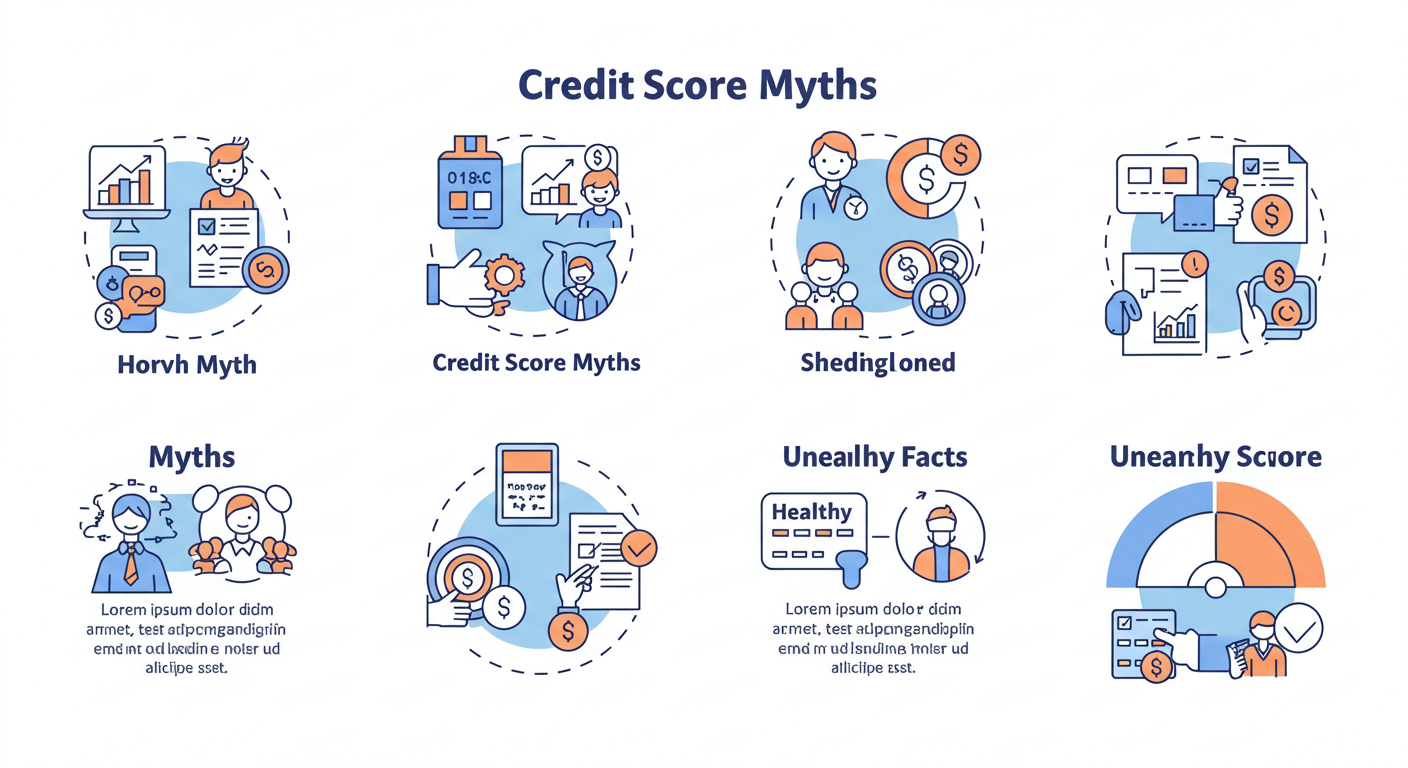Understanding Credit Scores
What is a Credit Score?
A credit score is a three-digit number that represents an individual’s creditworthiness. Lenders utilize this score to evaluate the risk of lending money or extending credit. Credit scores range from 300 to 850 and are calculated based on several factors, including payment history, credit utilization, length of credit history, types of credit, and recent inquiries.
Common Credit Score Myths
Myth 1: Checking Your Credit Score Lowers It
One prevalent myth is that checking your own credit score can negatively impact it. In reality, when individuals check their own credit scores, it is considered a “soft inquiry” and does not affect the score. Hard inquiries, which occur when a lender checks your credit for lending purposes, can cause a small drop in your score. Regularly reviewing your credit report helps you stay informed and identify errors that could impact your score.
Myth 2: You Only Have One Credit Score
Many believe they have just one credit score, but in reality, multiple scoring models exist. The most commonly known is FICO, but VantageScore and other proprietary models are also widely used. Each model may weigh factors differently and utilize varying data sources, which can result in different scores. It’s essential to understand which version of your credit score lenders are likely to use when applying for loans or credit cards.
Myth 3: Closing Old Credit Cards Improves Your Score
A common misunderstanding is that closing old credit cards will increase your score. However, closing an account can lower your overall credit limit and increase your credit utilization ratio, negatively impacting your score. Rather than closing old accounts, it is generally more beneficial to keep them open, as they contribute to your length of credit history, which is a significant factor in your credit score.
Myth 4: Only Borrowers with Debt Have Credit Scores
Many assume that only individuals with outstanding loans or credit cards have a credit score. This is inaccurate; even those who do not use credit can have a credit score. Lenders need a way to gauge the creditworthiness of all consumers, including those who have never borrowed. Thus, a “thin file” or no credit is also a measurable circumstance that creates a credit score.
Myth 5: Paying Off Debt Will Immediately Improve Your Score
While paying off debt will eventually lead to an improved credit score, it does not always result in an immediate boost. Credit scoring models may take time to reflect changes in your credit utilization and account statuses. Additionally, if debt is settled and reported as “paid” rather than “paid in full” or if there are any missed payments, this may still haunt your score for years.
Factors Impacting Your Credit Score
Payment History
Your payment history is the most significant factor influencing your credit score, accounting for approximately 35% of it. Late payments, charge-offs, and bankruptcies can severely impact this aspect. Consistently paying your bills on time is crucial for maintaining a healthy credit score.
Credit Utilization Ratio
The credit utilization ratio measures how much credit you’re using relative to your total credit limit. This ratio is calculated by dividing your outstanding credit card balances by your total credit limits. It ideally should remain below 30%. Higher utilization ratios can indicate to lenders that you’re over-relying on credit.
Length of Credit History
The longer your credit history, the better it is for your score. This factor accounts for about 15% of your credit score calculation. It’s recommended to keep older accounts open to maintain a favorable average age of accounts.
Types of Credit
Lenders look for a healthy mix of credit types, such as revolving accounts (like credit cards) and installment loans (like mortgages or auto loans). This aspect contributes roughly 10% to your score. Diversifying the types of credit can positively affect your score, assuming all debts are managed well.
New Credit Inquiries
Every time you apply for new credit, a hard inquiry is recorded on your credit report. Each hard inquiry can lower your score slightly, making up about 10% of your credit score. It’s wise to limit the number of applications you undertake within a short period, as too many hard inquiries can reflect risk to lenders.
Strategies for Improving Credit Scores
-
Consistent Payments: Set reminders or automate payments to ensure all bills are paid on time.
-
Monitor Credit Reports: Regularly review your credit reports for errors or discrepancies that could affect your score. You can obtain free credit reports annually from each of the three major bureaus at AnnualCreditReport.com.
-
Manage Debt Wisely: Focus on reducing existing debts, especially high-interest revolving debts. Consider methods like the debt snowball or avalanche techniques for managing repayment.
-
Utilize Credit Responsibly: Keep your balances low and avoid maxing out your credit cards. Aim for a credit utilization ratio below 30% for the best impact.
- Limit New Credit Applications: Restrict the number of new credit inquiries by applying only when necessary.
By understanding and debunking these common credit score myths, consumers can better navigate their financial futures, ensuring they maintain, and even improve, their credit standing effectively.




